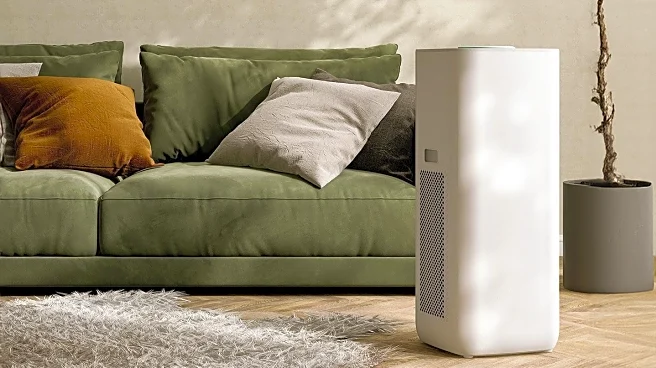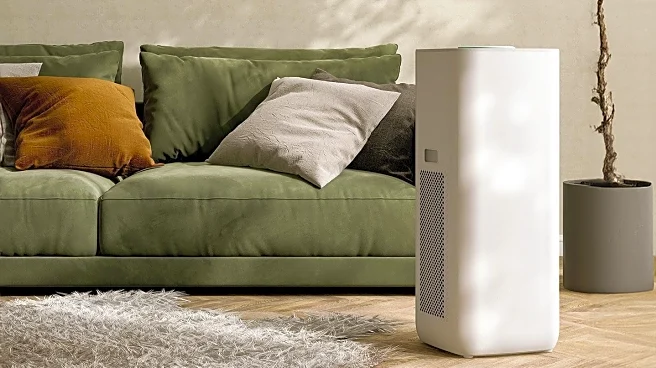What's Happening?
Indoor air quality is a significant concern, with experts highlighting various sources of pollution within homes. Michael Rubino, founder of HomeCleanse, and other experts have noted that indoor air can be up to five times more polluted than outdoor air. Common contributors include cooking, HVAC systems, cleaning supplies, wet appliances, candles, incense, and air fresheners. Cooking, especially with gas stoves, releases particulate matter that can affect respiratory health. HVAC systems can circulate mold and dust if not properly maintained. Cleaning supplies often contain volatile organic compounds (VOCs) that can harm health. Wet appliances like ice machines and refrigerator water spouts can harbor mold. Candles and incense emit smoke that contributes to air pollution, while air fresheners can worsen indoor air quality. Experts recommend using air purifiers, maintaining appliances, and opting for low-fragrance cleaning products to improve air quality.
Why It's Important?
Poor indoor air quality can lead to various health issues, including headaches, chronic allergies, asthma, and even cancer. The impact is significant as it affects individuals regardless of their location, given that the primary sources of pollution are within the home. Addressing these issues is crucial for public health, as prolonged exposure to indoor pollutants can exacerbate respiratory conditions and other health problems. Improving air quality can lead to better health outcomes and reduce healthcare costs associated with treating pollution-related illnesses. Additionally, awareness and proactive measures can enhance the quality of life for individuals, particularly those with pre-existing health conditions.
What's Next?
Homeowners are encouraged to take steps to improve indoor air quality by regularly servicing HVAC systems, using air purifiers, and choosing cleaning products with fewer VOCs. Installing true exhaust fans and opting for induction cooking can also help reduce pollution. Monitoring air quality with devices like Airthings View Plus can provide real-time data to identify and address pollution sources. As awareness grows, there may be increased demand for products and technologies that enhance indoor air quality, potentially influencing market trends and consumer behavior.
Beyond the Headlines
The focus on indoor air quality highlights broader environmental and health concerns, emphasizing the need for sustainable living practices. The push for net-zero energy efficiency has led to tightly built homes, which can trap pollutants indoors. This underscores the importance of balancing energy efficiency with health considerations. The issue also raises ethical questions about consumer product safety and the responsibility of manufacturers to provide healthier alternatives. Long-term, improving indoor air quality could lead to shifts in building design and consumer preferences towards more sustainable and health-conscious choices.












